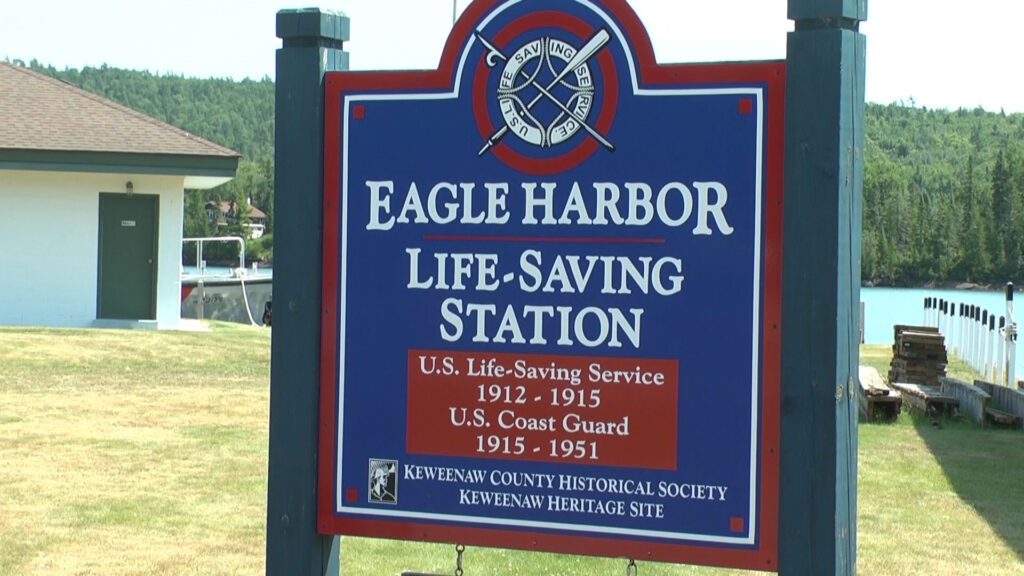Life Saving Station Museum Celebrates Open House

EAGLE HARBOR — While Lake Superior plays such a vital role in our day to day activities in the Keweenaw Peninsula, the Keweenaw County Historical Society is doing its part to highlight the history of the US Coast Guard’s involvement.
Both old and new vessels used for search and rescue missions were on display in Eagle Harbor, giving folks an opportunity to witness firsthand the advances in maritime technology and also to develop an appreciation for its past.
Located on the shoreline of the Harbor stands a building that is over 100 years old in remembrance of some of the Keweenaw’s bravest. What was once home to a full crew of the Coast Guard, is now a museum focusing on the progress of maritime innovation.
At it’s recent open house, the Life Saving station displayed vessels used for rescue operations from the past and present.
“Mostly we want to open up and show the public all the equipment that, when you look at the life saving service and you look at the US Coast Guard all these years, the equipment they used in these early years. We have a good representation of that equipment on hand for them to view. We welcome everybody to come and see what we’ve got. The museum is open daily from 9 until 6 and admission is free,” said Mark Rowe of the KCHS.
Some of the duties of the crew who once lived here, included rowing this boat in rough storm waters.
Anytime there were ships in distress somewhere they would reach out to the nearest stations and of course the life savers would make the effort regardless of weather. They had the motto– you have to go out, but you don’t have to come back. Rowe added.
One celebrated rescue that required crews from both Eagle Harbor and the Portage Life Saving Stations took place in the early 1900s where nearly two dozen survivors were brought to safety after their vessel was torn apart from a storm that claimed over 200 lives.
“Two crews of portage and Eagle Harbor made a rescue of the L.C. Waldo crew in 1913. They rescued 22 people, 2 women, and a dog after they spent 90 hours on that ship waiting to be rescued and they never knew if rescuers were going to show up, and they did,” He also said.
Those crews received gold medals for their heroic efforts.
As technology progressed, the need for two Keweenaw Coast Guard stations declined, and eventually only the Portage Station remained in operation.
“The freighters were getting better equipped. They were better able to navigate in bad weather. And as a result, this eventually closed. So now we’ve got the opportunity to take and bring back to life for a lot of people a time that was,” said Dave Thomas who comes to the museum twice a day to open an close the building and share some his knowledge acquired with nearly 4 decades of active coast guard duty.
Along with older human powered vessels that remain on display at the museum full time, visitors also got to experience some modern day equipment with a 47 foot lifeboat powered by two Detroit Deisel engines and is currently in service, docked at Dollar Bay.
“It’s pretty much a work horse. I think a lot of the questions I think everyone is surprised about is that its made out of aluminum. That seems to be the fascinating aspect of the boat,” said, David Duenow of the US Coast Guard.
With a price tag of 1.2 million dollars, the entire vessel is water tight, and in rough waters if it were to capsize, it returns to its upright position. Children and parents were able to tour the boat and sit at the controls while learning of some of the features.
“We’re here today to give tours of the 47. To talk about the boat and it’s capabilities. Also to talk about general safety with the kids. The importance of life jackets and boating safety and some of the requirements. Just getting our presence out there,” Duenow added.
